
Satanic Verses, a novel by Salman Rushdie
Mulholland Drive, a movie by David Lynch
The Sparrow, a play by House Theatre of Chicago (2007)
A Serious Man, a movie by Joel and Ethan Coen (2009)
On the Brink of Nora, a novel by JC Miller
Dreams That change Our Lives, a book by IASD
Archetype of the Apocalypse: Divine Vengeance, Terrorism, and the End of the World, by Edward F. Edinger
When Time Shall Be No More: Prophecy Belief in Modern American Culture, by Paul Boyer
Pilgrim, a true novel by Ellen Hasenecz Calvert
Amazon Reviews Various books reviewed at Amazon.com
Click the book covers to see the book at Amazon.com.
Cultic Studies / Cult-Related Book Reviews
Walking Free from the Trauma of Coercive, Cultic and Spiritual Abuse: A Workbook for Recovery and Growth, by Gillie Jenkinson
Scarred: The True Story of How I Escaped NXIVM, The Cult That Bound My Life by Sarah Edmondson with Kristine Gasbarre
If You Want to Know How I Got Brainwashed, by Betsy Dovydenas
Santa Fe, Bill Tate, and me: How an artist became a cult interventionist, by Joe Szimhart
Killing for Krishna, by Henry Doktorski
Gold, Guns and God: Swami Bhaktipada and the West Virginia Hare Krishnas: Vol. 4: Deviations in the Dhama, by Henry Doktorski
Sex Cult Nun: Breaking Away from the Children of God, a Wild, Radical Religious Cult, by Faith Jones
Universalist Radha-Krishnaism, by Steve Bohlert
Modern Religions: An Experimental Analysis and Exposé, by Elliot Benjamin
Servant of the Lotus Feet: A Hare Krishna Odyssey, by Gabriel Brandis
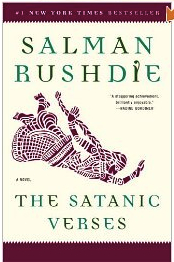
The Satanic Verses
by Salman Rushdie
Viking Press, 1988
The main character of Satanic Verses is Saladin Chamcha, whose real name is Salahuddin Chamchawala (shortened to live in the West). The author makes constant parodies of his characters' names, thus Saladin is variously called Sally, Salad baba, and even Spoono, old Chumch. He is the son of a rich Bombay merchant, but rejects his origins to live in England and become an actor. He hates India and wants to forget everything Indian.
The second character is a Bollywood movie star, Gibreel Farishta, who worked his way up from poverty in the streets of Bombay. The two actors meet in a fateful airline hijacking and explosion that sends both of them plunging into the English channel. They survive the fall, but fate dictates more trauma for both men. The actors assume opposing poles of human nature, Saladin the horns and cloven hooves of a devil; Gibreel a glowing halo and delusions of himself as a divine messenger of God.
The story separately traces their sagas in England for about a year. Finally Saladin, trapped inside his devilish centaur's body, lets out a scream of anger and despair at Gibreel, whom he imagines to be more fortunate than himself. At this release of anger, Saladin regains his human form.
The narrator reveals that Gibreel is suffering his own unhappiness. Even before the airplane explosion, he had been having serial nightmares that started each night where they left off the night before. In the dreams he becomes the archangel Gabriel, the divine guide of the prophet Mohammed. Gibreel, dreading the recurring dreams, struggles to stay awake, but invariably slips into several-day-long slumbers. Whole chapters are devoted to his dream worlds—encounters with the Muslim prophet, named in his dreams, Mohound; second, a twentieth century pilgrimage to Mecca, led by a girl wearing a blanket of live butterflies. The dream life and the waking life merge for Gibreel as he goes insane.
Gibreel and Saladin meet again while in England and become entangled in rivalry, Gibreel saving Saladin's life in a fire, despite their mutual vindictiveness. In the end, Saladin returns to Bombay to be at the bedside of his dying father. The father-son reunion cleanses Saladin of all resentments and reinstates his normal life. But then a crazed Gibreel surfaces in Bombay. Saladin learns from newspaper headlines that the actor is implicated in the murder of his former girlfriend and former producer. Thus Saladin prepares to meet the phantom and suffer for all the wrong he has inflicted on his parallel self. At the end Gibreel manifests a gun from Saladin's childhood magic lantern, but instead of turning it on Saladin, he turns it on himself and ends his life.
Salman Rushdie, due to his writing skill, was able to break all the rules of novel-writing, and tell a satisfying story. He gives various characters the same name (there are two women named Hind; two women named Mishal; two women named Ayesha) and he gives many characters similar-sounding foreign names. He also uses Indian words without defining them. Readers familiar with Indian culture could relish some of the descriptions, i.e., that the moon is like a "warm chappati dripping with butter" (chappati is a round, flat Indian bread). There were other aspects of Muslim culture, however, that may not be familiar to many readers. Therefore, much goes over the reader's head.
The narration was dominant in the storytelling. Most of the dialogue is contained within the narration, rather than acted out. There are few passages where characters speak more than one or two lines to each other. Usually, the narrator simply cites dialogue within parentheses or between double dashes to illustrate his point. Or, in one paragraph, he explains: he said this, then she said that, then he replied this, etc. The narrator is unquestionably there, telling the story as he observed it. Nevertheless, dramatic scenes come across with striking clarity.
On a few occasions, the unnamed omniscient narrator even intrudes into the story to give a quick observation or bit of advice to the reader. Of his character Gibreel he says,
Is he to be the agent of God's wrath? Or of his love? Is he vengeance or forgiveness? Should the fatal trumpet remain in his pocket, or should he take it out and blow? (I'm giving him no instructions. I, too, am interested in his choices—in the result of his wrestling match. Character vs destiny: a free-style bout. Two falls, two submissions or a knockout will decide.) Wrestling, through his many stories, he proceeds. (pp. 457)The author also breaks the show, don't tell rule. When the envious Saladin finally meets the successful Gibreel face-to-face at a London party, the narrator says,
O God, the cruelty of it, that he, Saladin, whose goal and crusade it was to make this town his own, should have to see it kneeling before his contemptuous rival! —so there is also this: that Chamcha longs to stand in Farishta's shoes, while his own footwear is of no interest whatsoever to Gibreel. What is unforgivable? (pp. 426)Rushdie simply spelled it all out—how Saladin reacts to Gibreel—even though the reader could deduce the situation for himself just as well. Every writing teacher and book about writing says over and over, "Show don't tell," but it seems Rushdie successfully skips this formality to deliver a satisfying clue to the plot.
In the final chapters the narrator spells out the theme in plain words. The thoughts of the main character, reflecting on the many selves he and Gibreel had become:
O, the dissociations of which the human mind is capable, marveled Saladin gloomily. O, the conflicting selves jostling and joggling within these bags of skin. No wonder we are unable to remain focused on anything for very long; no wonder we invent remote-control channel-hopping devices. If we turned these instruments upon ourselves we'd discover more channels than a cable or satellite mogul ever dreamed of. (pp. 519)The author Tells of the turmoil still burning,
It seemed Gibreel had not managed to escape from his inner demons. He, Salahuddin, had believed—naively, it now turned out—that the events of the Brickhall fire, when Gibreel saved his life, had in some way cleansed them both, had driven those devils out into the consuming flames; that, in fact, love had shown that it could exert a humanizing power as great as that of hatred; that virtue could transform men as well as vice. But nothing was forever; no cure, it appeared, was complete. (pp. 540)And again, the narrator Tells one of the truths he sets out to prove in his novel through the thoughts of Saladin:
Death brought out the best in people; it was good to be shown—Salahuddin realized—that this, too, was what human beings were like: considerate, loving, even noble. We are still capable of exaltation, he thought in celebratory mood; in spite of everything, we can still transcend. (pp. 527)The book is written in a surrealistic, stream of consciousness style. Rushdie's sentences are long, punctuated with multiple unorthodox colons, semicolons, ellipses, and double dashes; he makes up his own words by stringing words together. His style is appealing and fellow writers might wonder if they could ever duplicate it. Rushdie's ability to build and interweave plots is genius; his descriptions are hilarious and memorable.
The book is about religion (he despises organized religion), truth (which seems to exist despite religion), and human nature (his characters are religious fanatics and atheists). His parodies of his own religion—which caused the late Ayatolla Khomeni to condemn the book—are outrageous satire. Britain's Sunday Times called Satanic Verses a masterpiece, and many would agree.

Lynch's Mulholland Drive
Reviewed July 4, 2008
Although portrayed out of sequence in the movie, the first event in this story is that movie mogul thugs (the Castigliane Brothers) force director Adam Kesher to cast Camilla Rhodes as the leading lady in his new film. He refuses, then smashes their limousine with his golf club. (This scene is said to be a reference to a 1994 incident where Jack Nicholson did the same. Nicholson lived on Mulholland Drive for a number of years.) After the roughhousing, Adam complies with the wishes of the powers that be and casts Camilla Rhodes.
This must have been the worst day of the director's life, because he goes home early and finds his wife in bed with the poolman. By the time the main action of this movie starts, it's months later and he has divorced his cheating wife. He tells some friends at a party, "I got the pool, she got the poolman." By this time he has fallen in love with Camilla and announces their engagement.
Camilla's lesbian lover, Diane Selwyn, is jealous and hires a hitman to kill Camilla. She meets him at a local diner and gives him a purse full of money. He tells her that after the hit is done, he will deliver a blue key. She asks what the key opens; he just laughs at her. (It does not open anything, it's just a sign that the job is finished.)
While in the restaurant, a man standing at the cash register looks into Diane's face and sees her ugly hatred. It gives him a nightmare compelling enough to make him bring his psychologist to the restaurant to recount the dream.
The hitman's thugs pick up Camilla in a limo to drive her to Adam's house on Mulholland Drive, but they stop along the way, point a gun at her, and tell her to get out of the car. Just then, two cars approach, driving recklessly; one has a head-on collision with the limo. Everyone is killed except Camilla, who walks away from it. Most of the action in the movie takes place in the week following the accident.
Camilla's next week:
Although stricken with amnesia from the trauma of the accident, Camilla walks all night and ends up on the doorstep of her future mother-in-law's apartment complex. (Coco, played by Ann Miller, is Adam Kesher's mother.) Camilla drifts off to sleep hiding in the hedges. When she awakens she sees a woman leaving one of Coco's apartments, so she sneaks inside for refuge. Soon, aspiring actress Betty Elms arrives from Canada. it's her aunt's apartment; the aunt has arranged an audition for Betty. When Betty finds Camilla in the shower, she is supportive and sympathetic to Camilla's situation. She takes Camilla to various places to check on details of the few things Camilla remembers. Betty goes to her audition and the producers are impressed with her acting ability.
Diane's week:
Meanwhile, Diane is consumed with guilt, staring at the blue key that symbolizes her former lover's murder. She is frightened because detectives keep coming around. She shoots herself in the head in her bedroom, probably within a day of the incident.
The hitman's week:
The payment for the hit disappears (Camilla walks away with the purse containing the money), so he goes to see the thug who was supposed to organize the hit. The man laughs about the accident, so the hitman kills him and takes his black book (the evidence). He accidentally shoots a woman in the next room, so he must kill her, then he must kill the janitor who was a witness. The hitman goes out on the street to look for Camilla, who has disappeared. The movie does not mention this, but many people must be searching for Camilla, whose whereabouts are unknown.
Camilla finally regains her memory when Betty takes her to a nightclub called Silencio. They find a mysterious blue box in Betty's purse, which symbolizes Camilla's amnesia puzzle. Camilla inserts a mysterious blue key into the box and opens it, which symbolizes her memory returning. She realizes why the men wanted to kill her, and she remembers her real life as a successful actress engaged to an accomplished director.
The story is larger than the plot. Not shown in the movie, Camilla Rhodes will re-emerge with her memories intact and her mysteries resolved. Betty Elms will get her acting career, because not only is she talented, but she is a hero for protecting Camilla and helping her.
Editor's note: I lived in the Disney Cottages when the movie came out. Diane's bedroom was where I slept for two years. Everyone warned me not to see the movie. All they could tell me was that it was scary, impossible to understand, and that a woman commits suicide in my bedroom at the end.
To add coincidence to coincidence, I grew up a block from Mulholland Drive (on the corner of Scadlock and Longbow). My roommate at the Disney Cottages was my friend Kyle, who grew up in a house on Mulholland Drive, near Woodman. David Lynch had filmed the footage at the Disney Cottages about a year before we moved there. I had put off watching it until now, but I saw it this week, and loved it. Now it's one of my favorite movies, right up there with Dr. Strangelove, Airplane! Blazing Saddles, and Groundhog's Day. It has a good message and a good ending.

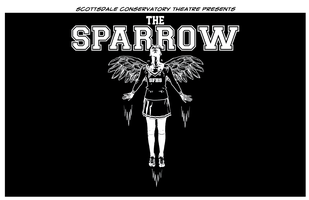
The Sparrow
A play by Nathan Allen, with Chris Mathews and Jake Minton
Chicago House Theatre, 2007
Performed at the Scottsdale Conservatory Theatre
Scottsdale Community College
June 26, 2013
The Sparrow is the story of Emily Book, a child who witnessed the death of her second grade classmates. One day, after the school bus dropped her off, it collided with an oncoming train. As the sole survivor, she was sent to live in a convent. Emily was angry at the children on the bus that day because they took her lunch box. Just when the accident happened, her mind was flooded with revenge thoughts. Thus, she grew up believing that her thoughts caused the accident.
The main story takes place in present day 2007, when Emily returns to Spring Farm, Illinois. The convent has arranged for her to complete the last part of her senior year at Spring Farm High, so she can have the diploma to get into a good college. She is an excellent student, and this appears to work out for her. One of the last scenes takes place during finals week.
One chilling detail is that Emily is the only person in the senior class, since the rest were killed. Having Emily back reminds the towns people of what they lost and at times they treat her like she is a ghost. Plus, they start to notice her magic powers. She can fly, among other things.
The people accept her powers, since she uses them mostly for good, including some hilarious pranks. However, they begin to notice that she can also make bad things happen. When confronted about the accident, Emily finally confesses that her magical powers did push the bus onto the train tracks that day! But she says it was an accident and she regretted it.
Rather than deny her powers, she transforms them into a gift to the town. She gives them a concrete reason why the children died that day, along with someone to blame. After her confession and plea for mercy, she forgives herself and heals. The towns people accept her mistakes and forgive her. She is the catalyst that finally gives closure to the people of Spring Farm.
One of the great themes in The Sparrow is the role men play in Emily's life. She has a driver who takes her to the convent after the accident, and later takes her back to Spring Farm. During each transition, he explains what is happening and what her duty will be in the new situation. He acts as the messenger god Mercury to bring about these major transitions in her life.
The main man in the play is Dan Christopher, the archetypal cool biology teacher. He is a friendly animus figure: gorgeous, helpful, even romantic. The day they dissect pig hearts in biology lab, Emily's magical powers make the pigs come back to life. Because of her, everyone starts to sing and dance, and she lives out her fantasy of swing dancing with Mr. Christopher.
In one touching scene, Mr. Christopher tells Emily that his wife was the bus driver, and that she perished in the accident. It's an odd plot twist, probably meant to show how closely the threads in this small town were intertwined.
In his office after the prom, Mr. Christopher dances with and kisses Jenny McGrath, the head cheerleader. Emily walks in on them and her magic powers scratch Jenny's face. Mr. Christopher apologizes and resigns during finals week.
In the last scene, Jenny shoots Mr. Christopher, but Emily uses her magic to remove the bullet from his chest, and he comes back to life. Then Emily flies out the window and disappears. Presumably, she has gone to Chicago to start college, using the bus ticket Mr. Christopher gave her.
Directed by Scottsdale Community College Theatre Arts Director Randy Messersmith, the June 26th performance featured Sarah Zorman as Emily Book, Jessica Bastarrachea as Jenny McGrath, and Aaron Potter as Dan Christopher. It was produced by special arrangement with the Dramatic Publishing Company, Inc., of Woodstock, Illinois.
Analysis of Magical Thinking
The play does not judge Emily Book for her magical thinking or say it's wrong. However, I had this problem myself and decided it was wrong for me. I got over it in recent years through counseling, and journaling about it.
Watching this play was a catharsis for me, and I love the way it celebrates Emily and her powers. It's a transformative story. The bad magic cancels itself out when the people finally accept it as truth.
But rationally speaking, Emily was innocent. As a seven year old, she did not have the power to push a bus into the path of an oncoming train, physically or through her thoughts. It could have been the driver's fault or nobody's fault. If someone could have explained this to Emily at the time, it would have helped her avoid unnecessary emotional suffering.
Plus, who would want to be associated with a magical power that would brutally murder a bus full of children simply for teasing a classmate?
Reaction in the wake of a similar tragedy is the theme of another movie, Fried Green Tomatoes (1991). In the opening scene, a boy named Buddy Threadgoode is killed by a train when his foot gets stuck in the tracks. The movie traces how his loss affected those close to him, especially the other children in the Threadgoode household.
Life repeatedly presents unexplained unfortunate incidents, so we must cope with them in the best way possible. Allowing children to blame themselves through magical thinking is not helpful, not rational, and not recommended.
It helps when parents sit down with their children and verbalize their own, hopefully rational adult thoughts, and help children get through tragedy. The parents were absent in Emily Book's story, so the message of the story is to be there for children.

Notes about the movie, A Serious Man
A Serious Man (2009), by Ethan and Joel Coen, is a story of religious guilt. Larry Gopnik is a high school physics teacher who lives with his wife and two children. His wife announces that she is in love with Sy Ableman, Larry's best friend, and wants a divorce. Then, due to the stress, Larry gets in a car accident. Coincidentally, the same day—possibly the same moment—Sy is killed in a car accident a few miles away. Larry believes god is trying to speak to him through this coincidence, and he seeks answers from a rabbi. He feels so guilty about it he pays for Sy's funeral.
At work, one of Larry's students fails an exam and wants a chance to raise his grade. When Larry refuses, the student leaves an envelope containing $3,000 on his desk. Due to all his financial troubles, at the end of the movie, Larry takes the bribe money. In the last scene, a guilt-ridden Larry Gopnik erases the F and writes in a C minus. Just then the phone rings and his doctor tells him he must come into the office to discuss the results of recent chest x-rays. Larry sees the notification from his doctor as a sure sign of cancer and God's punishment for his transgressions.
Religious fundamentalists may believe god is watching them all the time like a mean babysitter. In Larry's mind, accepting a bribe and changing a grade sentenced him to disease and death, along with all his other problems. But in reality, bad chest x-rays were more likely attributed to ubiquitous secondhand cigarette smoke, as the movie was set in the 1960s.
The rational view outside the context of Larry Gopnik's mind, is that life offers opportunities for self-improvement. But it does not have to come through punishment from god. We can learn more from books, good teachers and counselors, and performing a useful function in society. Bad things happen every day, but if we take them too personally, we will end up depressed like Larry Gopnik. Plus, in blaming oneself, the real cause of the problems is ignored. For example, convincing people cancer is a result of bad karma lets cigarettes and other carcinogens off the hook.

On the Brink of Nora
by JC Miller, Unlimited Publishing, 2009
Mid-life Crisis Catharsis Fest
Eric and Nora Westin have their daughter Daniela home from college for summer break. Eric, a high school teacher turned real estate agent, was dedicated to his wife, but lost her respect somewhere along the way. Despite bringing home big commission checks, his old self had evaporated, and Nora had withdrawn to the netherworld of peri-menopausal depression. Daniela has a dilemma of her own: a lesbian liaison with her childhood friend, which she cannot talk about with her parents.
When we meet the family one sweltering summer afternoon, relations are strained. Nora cannot relate to her daughter, and Daniela cannot relate to her mother. Eric has lost interest in his marriage and casts his fate on a sexy young client who impulsively puts a contract on an old fixer-upper outside of town. It was Eric's first sale in six months, in the already sagging housing bubble. With no other prospects in sight, and with the loss of his image of himself as the provider of the family and loyal husband, he quits jogging and starts smoking again after twenty years.
On a mother-daughter day out, Daniela and her hairdresser friends convince Nora to liberate herself from the twenty-year, thick braid she wears. Freed of her yard-long tresses, Nora goes on a search for liberation that throws her family into turmoil. She completely loses control of her family and her life, only to gain control of her own future.
The story unfolds in lush landscapes of gently rolling hills, foggy wetlands, and seascapes of Mendocino and Sonoma Counties in Northern California. The characters and plot are so lifelike that Nora and Eric could be neighbors living down the street, or friends of friends who live in Santa Rosa. The reader is swept away in the waves of the many beaches, summer storms, and warm moments the characters share as they hurtle forward into an unknown future.
The writing is natural, as if JC Miller simply recounted autobiographical memories, but it's pure fiction, based on the author's experiences. The characters are of her own creation, composites of all the people she has ever known. The story will resonate with anyone who has gone through a mid-life crisis, or anyone who has watched their own parents spinning out of control during those tumultuous years leading up to fifty.
At first the reader may recoil at Eric's indiscretions, Nora's aloof, depressed moods, and Daniela's child-like sheltered, naïve view of life. However, all three undergo character transformations that validate the miracle that life really is, as it offers us unlimited opportunities to work out our deepest fears, and leads us to find new ways of being, and new ways to improve how we see ourselves.
Nothing works out perfectly for any of the characters, as happens in real life, but they each get a chance to examine their own weaknesses, as they transform into deeper, more real human beings. The reader is left feeling that they have met the family and gone through this episode of life with them. The book offers a tremendous catharsis for any reader looking to understand the meaning of love.
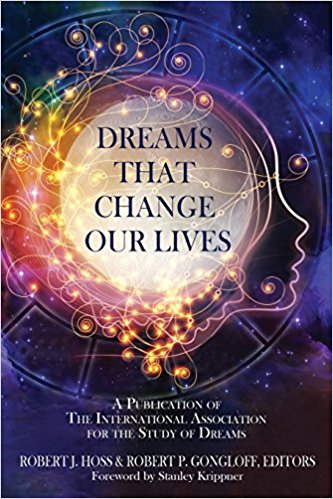
Dreams That Change Our Lives
by Robert J Hoss (Editor), Robert P Gongloff (Editor), Stanley Krippner (Foreword)
This is a book about dreams, by dream workers. Each chapter is written by a prominent dream book author, and each chapter begins with a personal story about the author's own dreams. The chapters are grouped by subject, to explore the purposes dreams serve. They focus on the exceptional dreams, or big dreams, as they are called. Big dreams have the potential to change the course of the dreamer's life for the better.
After describing personal experiences with dreams, each author fills out his or her chapter with their own collection of dreams of others who had similar experiences. The book is thus a collection of vivid life-changing dreams. Although written in words, the dreams appear to the reader as images, and the book feels like a visit to a museum of dreams. Because the book is full of vivid dream images, it's a fast and fun read.
In the last chapter, the editors draw conclusions about the purpose of dreams, and quote Carl Jung, who confirmed dreams speak to us in an "emotionally charged picture language." Jung was among the first Westerners to study dreams at the beginning of the twentieth century. From Jung to the present day, the science of dream studies has come a long way in the last hundred years. Dreams That Change Our Lives conveys the state of the art of dream studies. Brain studies, and dream studies, now show that dreaming plays a vital role in helping us adapt to the awkward and difficult situations of life.
This book, a project of the International Association for the Study of Dreams (IASD), is a gift to anyone interested in the messages from their dreams. The authors and others who shared their dreams for this book showed courage, revealing their innermost numinous experiences to help others. The book provides evidence dreams may change lives, provide assurance, heal mind and body, inspire artwork, music, or creative writing, comfort people after the loss of a loved one, and comfort those approaching death.

Pilgrim: Tales of a Traveling Cat
by Ellen Hasenecz Calvert, AuthorHouse, 2009
Review published in the Lakes Log, Vol. 37, No 8, August 2009
This book tells the story of a cat named Pilgrim, as seen through Pilgrim's eyes and narrated by Pilgrim. In the first chapter, the cat says:
My life has been a series of adventures. When I first thought about writing an autobiography of these stories it was in the late 1980s. At that time, I rejected the idea of typing them because of the logistics involved in manipulating my huge front paws to hit the right keys. (p. 2)The story is convincing and the cat is a great storyteller. The reader sees events from the animal's perspective beginning with the fateful day when the family picks him out at Noah's Ark Animal Haven in Morris County, New Jersey. The cat recalls, "I watched as if from on a cloud as they checked me out." (p. 5)
If you have ever suspected that house cats think and reason like children, this book will confirm it. Pilgrim details his life with the family over the course of seventeen years and watching the two children grow up and leave home. He says,
These were the kids I had grown up with from kitten hood and I knew that I had made a significant difference in their lives. I remain firm in my belief that cats changed a household merely by just being there, or more importantly, by their interactions with members of the household. (pp. 31-32)When one of the children, George, comes home to visit, he picks the cat up and says, "Pilgrim, do you have anything else to add to that?" And the cat comments, "You can't imagine how much I enjoyed this more mature relationship between George and me since he grew up." (p. 31)
When the author's husband tries to call the cat, as one would call a dog, he declares, "See, dog training works on cats too." At this, the cat reveals, "I became unhinged to think I had almost fallen into the trap of becoming trained." (p. 34)
The book is factually true and traces the cat's history from the animal shelter through several moves across the country from New Jersey to Arizona and New Mexico, and through an incident where the cat gets lost at a campground in Carlsbad, California.
A short read at fifty-eight pages, the book will make you cry whether or not you love cats, and it is being devoured by readers throughout The Lakes, where author Ellen Calvert lives.

Scarred: The True Story of How I Escaped NXIVM, The Cult That Bound My Life
by Sarah Edmondson with Kristine Gasbarre
Published Chronicle Prism. 2019
Reviewed by Nori Muster
Sarah Edmondson's Scarred is a gripping and courageous memoir that takes readers deep inside the world of NXIVM, a self-improvement organization that turned out to be a manipulative and abusive cult. As a fellow cult survivor, I found Sarah's story both relatable and heartbreaking. Her vulnerability and honesty shine through as she recounts her journey from eager student to disillusioned defector.
Sarah Edmondson was already a successful actress and voice-over artist in the Canadian movie business when she joined NXIVM; her career and connections would have made her a good catch for any cult leader. Not only did she have a big network, but she was also sold on NXIVM and used her vivacious personality to bring in new members. This was great for the self-help guru Keith Raniere, who built a pyramid scheme to peddle his personal-growth seminars.
The group was based in upstate New York and had branches in Canada and Mexico. One of the key players was Emiliano Salinas, son of Carlos Salinas de Gortari, former President of Mexico. Nancy Salzman was the co-founder of NXIVM, and her daughter, Lauren Salzman, was a high-ranking member. Lauren became Sarah's closest friend and confidant. It's a typical cult technique: celebs need a special friend to keep them in the fold.
The leadership tried to make NXIVM look like a legitimate company by offering opportunities to "climb the ladder." Leadership announced promotions at the annual coach summit. It was a great honor to rise in the organization; this goal kept followers involved and active.
Students who chose to become a coach were going up the "stripe path," similar to the "bridge to total freedom" in Scientology. Those who got promoted received a sash to wear at the training sessions, and the color of the sash defined their level in the organization. The way I see it, this was like a caste system. Many cults split followers into various levels. The group I was in had a caste system based on the one in India, which made women stand at the back. Another example is the Unification Church, also known as the Moonies, which had "blessed" and "unblessed" children. The unblessed children were not allowed to recite certain prayers or take part in certain rituals, and they took a lot of verbal abuse.1
NXIVM's sash system was notoriously capricious. For example, the leadership could purposely ignore someone's hard work and stop giving them promotions, arbitrarily blaming this on whatever emotional issue they decided that the person was struggling with at the time. Even worse, they could demote someone or just take away their job altogether. Humiliation of members is another common tactic of a cult. For example, Scientology is known for violently abusing the members of their inner circle.2
One of the most disturbing revelations about NXIVM, which Sarah addresses with candor and impact, was its subgroup called DOS, which was supposed to be a women's women-only group for building character. The leadership asked DOS members to provide nude photos, videos, and recordings, and signed documents with confessions of criminal activity. They referred to these as collateral. Sarah said she couldn't think of anything, so Salzman pressured her to make something up. Some of the women were even asked to turn over the deed to their house and designate NXIVM as the guardian of their children in their will.
NXIVM also had several mysterious deaths, which Sarah discusses in chapter twelve, "Illusion of Hope." After the death of Pam, a friend and well-loved mentor in the group, the leadership built a macabre museum-like exhibit for her memorial. At the annual conference, they displayed Pam's outfits on mannequins and gave people headphones to walk up to these displays and hear the pre-recorded stories of Pam at each stop. Sarah likened it to "a recorded tour of Graceland" and said it was the weirdest thing she had ever seen (p. 159).
The secret DOS initiation rites, which were disclosed in the well-publicized trial of Raniere and his associates, included, shockingly, using a hot iron with no anesthetics to brand an initiate's pelvis. The identifying mark was supposed to be a symbol for the elements, but was actually a cryptic monogram of Raniere's initials. Not only did the leadership hide this important information from new recruits, but they also withheld that the main objective of DOS was to groom women to be sexual partners for Raniere. They expected women to go along with this once they had agreed to be initiated into DOS and provided their collateral.
For someone who has never experienced cult peer pressure, it may seem improbable that women would subject themselves to these humiliations, but this was a cult, a criminal cult. Members of NXIVM felt they had to obey, partly because they felt loyalty to the organization, but mostly because the leaders collected their collateral and held it over them like a gun to their heads.
Even though Raniere said "NXIVM" translates to "the next millennium," more likely the word traces back to the ancient Roman system of debt bondage called "nexum." The word is based on the Latin verb nectere, which means to tie or bind by obligation. In the nexum system, to secure a loan, a borrower had to pledge their own freedom as collateral. When borrowers defaulted on the loan, the lender could enslave them (p. 25).
Bringing this nexum slavery bond into the twenty-first century is an act of pure evil. Another bizarre aspect of the elite sorority DOS Sarah describes, was that women became both slaves and slave masters. Once initiated, they could claim up to six people to answer to them. Salzman made Sarah her slave and would text her at all times of the day or night. If Salzman texted her at 3 a.m., she had to get up, go out of the room so she wouldn't wake her husband, and reply to the text. Sarah and her husband had a young baby, which is demanding enough, but Sarah also had to contend with these relentless texts. If she took too long to respond, Salzman would punish her.
Salzman was playing a familiar cult-y game, harassing Sarah to drain her energy. Unfortunately for NXIVM, this harassment (amongst many other issues that had started to pile up) led to Sarah's realization: "I'm in a cult." As soon as she could finally see what was really going on, she was in act three of her story. Sarah and her husband not only left NXIVM, with the help of the FBI and a group of formerly high-ranking whistleblowers, but they also took it down.
One of the things I treasure about this story is the loving embrace Sarah's family gave her when she left NXIVM. Seekers who abandon their families to join a cult and stay for many years may or may not be welcomed back. Joining a cult can destroy relationships and burn so many bridges. But Sarah's family welcomed her and helped her get started with her recovery.
Like most cult members, Sarah's journey in NXIVM was mixed. Some aspects were horrifying, but she says there were good elements that made her want to stay. Followers are often drawn into a cultic group because they are looking for community, and often, the best part of the experience is the good people we meet. Then, too, because of the group's dysfunction, members get through difficult times together. Suffering together and helping each other survive can establish unbreakable bonds, also known as trauma bonds. In my cult, I made friends at the temple and in the office where I worked. The good relationships I established account for why I stayed so long. Also, like me, while in the cult, Sarah married a good man, and like Dave and I, Sarah and her husband left together.
This book is not just a personal story; it's also a powerful exposé of the dangers of cultic groups. Sarah's insights into the psychology of manipulation and the dynamics of coercive control are invaluable for anyone who wants to understand how these groups operate and to protect themselves from their influence. Scarred is a testament to the resilience of the human spirit and the power of speaking truth to power. Sarah's courage in sharing her story has not only helped to expose the abuses of NXIVM but has also inspired many others to come forward and reclaim their lives.
The book is a must-read for anyone who wants to understand the dark side of self-improvement culture and the dangers of unchecked power. It's a powerful reminder that even the most intelligent and successful people can be vulnerable to manipulation, and it's a call to action for all of us to be more critical and discerning in our choices.
Sarah Edmondson and her husband Nippy continue their work to expose dangerous cults on their podcast A Little Bit Culty. Telling our stories is a useful way to channel our anger and regrets. Instead of blaming ourselves, sharing our cultic experience may help spare others from having to go through what we endured.
______________
Notes
1. Unblessed children are now called "Jacob's children." See "On the Outside Looking In: Growing up in the Moonies" https://articles2.icsahome.com/articles/on-the-outside-looking-in-growing-up-in-the-moonies
2. See Wikipedia for information about "The Hole" https://en.wikipedia.org/wiki/The_Hole_(Scientology)
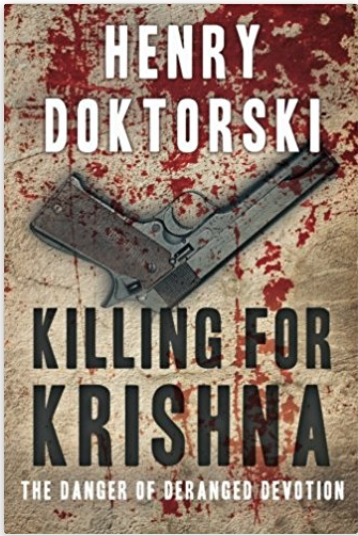
Killing for Krishna: The Danger of Deranged Devotion
by Henry Doktorski
Published January 8, 2018
CreateSpace, 660 pages; paperback and e-book
Killing for Krishna tells the story of the most notorious crime in the history of the International Society for Krishna Consciousness (ISKCON): the murder of Steven Bryant, aka Sulochan, on May 22, 1986. The murder conspiracy grew out of a culture of violence in New Vrindaban, the largest ISKCON center in America, located in the back hills of West Virginia. The guru and king of New Vrindaban was Kirtanananda Swami, also known as Bhaktipada, and whose real name was Keith Ham. Over the twenty-six years of Kirtanananda's reign, none of the ISKCON leaders anywhere in the world could stand up to him.
ISKCON has had a half-dozen murders and other crimes, but the Sulochan murder stands out because it was a carefully planned crime, for which the gunman, the guru Kirtanananda, and others served time in prison. The gunman is still serving a life sentence.
Doktorski traces every thread of the murder conspiracy, beginning when Sulochan joined ISKCON, to when he is murdered, on to how the conspirators fared in court, and ending with the aftermath up to the present day. Much of the later history, as cited in emails and other online exchanges, describes the internal bickering over who was the most to blame for the murder.
Doktorski concludes the book with a warning about deranged devotion, citing tape recorded conversations and published statements, where the ISKCON founder explained why it was okay to kill for Krishna. He never advocated killing anyone, but in his teachings, he compared it to soldiers killing for a country's military. If killing is authorized, it's okay. That leaves the question, who can authorize a murder for Krishna? Fundamentalist religious cults often adopt twisted understandings of their own dogma, and given a deranged leader like Kirtanananda, and blindly devoted followers like he had up to the end of his life, the Sulochan murder makes perfect sense.
Doktorski concludes: "the tragic yet heroic saga of Sulochan serves to enlighten us as to why we should not encourage nor participate in those charismatic cults. Instead, to whatever extent possible, we can work to curtail those cults from ever again gaining the momentum they did in the nineteen-eighties."
Killing for Krishna is just a slice of the ISKCON history Doktorski plans to document. He published this story first, since it answers a lot of questions about ISKCON's controversial past. Unfortunately, the murder, and the culture behind it, remain taboo subjects within the ISKCON organization. By maintaining silence, they risk their reputation because the truth has its way of coming out. For one thing, books like Doktorski's will not let ISKCON completely forget.
Killing for Krishna relies on court records, media accounts, interviews, and the author's own memory, since he lived through that era as a Kirtanananda disciple in New Vrindaban. The book includes a sixteen-page, detailed New Vrindaban timeline that covers the years 1974 to 2018. People who grew up in New Vrindaban or lived there during the seventies and eighties would gain new insights into their own experience from reading this book, and studying the timeline.

Universalist Radha-Krishnaism: A Spirituality of Liberty, Truth, and Love
By Steve Bohlert, Sky River Press, 2009
Publications of this review:
radha-krishnaism.org (author's site),
stevebohlert.com (author's site)
skyriverpress.com (publisher's site); and an excerpt will appear on the book jacket)
See Beyond the Veil
This book comes as a cooling breeze on a hot day. It offers a glimpse into an eternal world of love that actually surrounds us at all times. The perfect world that Plato detected, just beyond the veil, really does exist, yet we spin our webs of karma so tightly that we cease to acknowledge it. As you read this book, you hear the music of the spheres, like the rising choral, Ode to Joy, in Beethoven's final symphony.
Author Steve Bohlert dedicated his life to finding the source of the music, which led him to India, where he served and studied with enlightened masters; and it took him to San Francisco Theological Seminary, where he earned a Master of Divinity from the Graduate Theological Union, and became an ordained pastor in the United Church of Christ. He was raised in the Missouri Synod, christened and confirmed.
Bohlert's life is a bridge between East and West, and a merging of his Christian Universalist beliefs with his strongly held bond with the eternal divinities Radha and Krishna. Universalist Radha-Krishnaism is a product of his studies, and outward manifestation of the bridge he first built within.
The time is right for a book such as Universalist Radha-Krishnaism. As Bohlert points out, "We live in a relativistic, pluralistic world open to truth in all forms." (p. 5) There is no one way to hold faith, and many in our culture today are searching for truth. As a life long seeker myself, open to both Eastern and Western religious ideas, I consider this book a portal to enlightenment. Bohlert leads the reader up a spiral staircase to the light, winding through the Christian and Hindu faiths as we ascend.
Many of the concepts were already familiar to me, coming from Missouri Synod Lutheran roots, and having spent ten years in the Hare Krishna movement (ISKCON). The Lutherans started out as reformers five hundreds years ago but became quite strict, and as Bohlert points out (p. 5), "most Radha-Krishna devotees are fundamentalist literalists." It is ironic, but typical, since religious institutions tend to become entrenched in their belief systems, and closed down to change.
Hundreds of years ago, Radha-Krishna, the archetypal goddess and god of love, were little-known outside of India, and worshiped only within the Hindu faith. Eighteenth and nineteenth century archaeologists and scholars made us aware of Hindu gods, but prior to the twentieth century, nobody in the West had any actual experience of Radha and Krishna. Even today, god and goddess remain concealed behind a brick wall of fundamentalism, which most of us from a Judeo-Christian background are powerless to navigate. On one hand, we may sense truth there, but until Bohlert's interpretation, there was no way to pierce the fundamentalist views and practices that keep these deities off limits. Even the Hare Krishna movement and similar groups may fail to offer a satisfying genuine experience.
One of the subjects Bohlert introduces, which is forbidden in the fundamentalist world of the Hindu sects, including ISKCON, is permission to meditate on Radha-Krishna's eternal pastimes. ISKCON warns its followers that they will always remain neophytes who dare not dream of life in the eternal realm. This was tried in ISKCON in the mid-1970s, but the fifty or so members of the Gopi-bhava Club, as it was called, were scorned and drummed out as heretics. Gopi is the Sanskrit word for the cowgirls of Krishna's world, and bhava means mood, feelings, or emotional state, so gopi-bhava is the mood of the gopis.
Toward the end of the book, Bohlert offers an outline of a typical day in Krishna's world with the gopis and other eternal associates, and invites us to imagine how we might fit in. He said Krishna comes around a couple times a day to visit with you, find out how you're doing, and discuss whatever is on your mind. Since reading the book a few days ago, I have imagined many things I would like to say to Krishna.
Bohlert was a member of ISKCON in the early days of the movement, 1967-1974, when he was starting temples around the world for the founding guru, Srila Prabhupada. Later, he served a one year stint in New Vrindaban (West Virginia), 1980-1981. However, like many of us, he had to leave the confines of the organization to continue his spiritual journey.
In Universalist Radha-Krishnaism, Bohlert speaks without the constraints of fundamentalism, re-imaging Radha-Krishna for the modern seeker. He cites the evolution of thought (p. 28) and the need to reinterpret religion in each new generation. Through his long education and practice, he learned that he can be part of the process of religious reform. This book is his way of moving the conversation forward, mingling two divergent religious traditions, and making the supreme Hindu god and goddess accessible to his readers. He dubs Radha-Krishna God-dess, which means god and goddess together.
Bohlert dismantles the fundamentalist notion that we come from original sin, that we were put in this material world as a punishment, that our flesh is evil, and that god is a menacing figure who sits in judgment. These fears played a part in the development of both Christian and Hindu theology, and may have helped to enforce discipline on people who lived in previous centuries. However, Bohlert argues in favor of universal love and freedom, which are common tenants of most new age religions. He writes that, "Like any good parents, Radha-Krishna want us to enjoy ourselves. This adds to their enjoyment." (p. 25) He explains that worldly fun and spiritual devotion co-exist when we learn to live in harmony with god and goddess, nature, and all beings.
Besides citing references from his teachers in India and Berkeley, Bohlert's opus draws on Plato, Martin Luther, Ralph Waldo Emerson, Carl Jung, the humanists, Jack Kerouac, and quantum physics. He shows how the truth runs through all these rivulets, from Plato's Theory of Forms, to Carl Jung's archetypal reality, and ties it all together in his vision of God-dess. He says, "We exist as parts or emanations of God-dess, and like a piece of a hologram or a fractal, we contain the image of the whole." (p. 31).
One chapter discusses the life and teachings of Chaitanya Mahaprabhu (1486-1533), a reformer in India and contemporary of Martin Luther (1483-1546). Chaitanya was said to embody Radha and Krishna as an incarnation (avatar), and he led a revitalization movement in India that paralleled the Renaissance taking place in Europe. Bohlert compares Chaitanya to Martin Luther for offering an alternative to fundamentalism, and to Jesus for breaking down caste and gender barriers. He also describes Chaitanya's influence on the Moslem religion of his day in India. It was refreshing to me to gain new insights into Chaitanya, adding depth and detail to the introduction that ISKCON offered during the years I was a member. This is welcome, since Chaitanya does not belong to any one organization, or any one region of India. Bohlert's book will spread Chaitanya's teachings to a broader audience.
Bohlert mixes the worldly and next-world experiences, when he says that we have a duty here on Earth to enjoy this life. In Bohlert's view, salvation is more than just for ourselves, in terms of wanting go to heaven when we die. He explains why our experience here is important, and offers spiritual reasons to stand up to the challenges of today. He says salvation "includes communal salvation, which involves healing the brokenness of society and individuals. Society as a whole cannot be healthy until all are healthy and whole just as the body cannot be healthy if certain parts are diseased." (p. 42) The solution, he says, is "We need to see ourselves as part of God-dess' extended family, as brothers and sisters in the human family, and as part of creation. Then we can solve our problems cooperatively." (p. 47) He explains, "The more we learn to experience God-dess and consciously live in the material world responsibly, the more we spiritually evolve." (p. 66) Put simply, "The more spiritual we become, the more we enjoy this life fully." (p. 86)
The gift for reading the book is to go from hearing about god and goddess, to actually experiencing god and goddess. When we first pick the book to read it, we may feel like outsiders to a fundamentalist religion with few entrance doors. However, after a thorough and thoughtful read, we embody the relationship with god and goddess. The music of the spheres lights within ourselves. As Bohlert confirms, "This is living the myth." Fundamentalist scholars from the various Hindu groups may give Bohlert grief for unleashing the mystic experience to his readers, but Bohlert has the credibility as a scholar, through his lifetime of preparation for writing this book, to make this leap for his generation. So never fear, anybody from any background may read the book and form an eternal bond with the denizens of the spiritual world. Bohlert asks the reader to throw off convention, and simply embrace the love emanating from Radha and Krishna. If more people read this book, the world will be a better place.
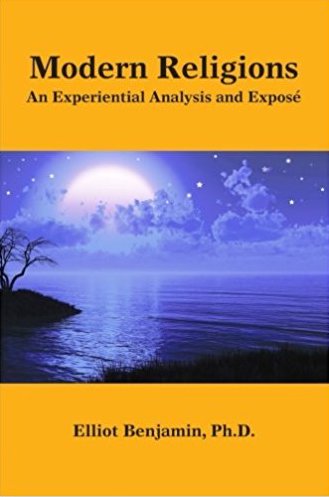
Modern Religions: An Experimental Analysis and Exposé
by Elliot Benjamin
Publications of this review:
ICSA Today, Vol. 3, No. 1, 2012, 17-18
Subversive Thinking Blogspot, November 2, 2011
The Journal of Transpersonal Psychology, 2012
Elliot Benjamin, Ph.D., describes his experiences in a variety of new age spiritual organizations, most of which are psychology-based groups. He describes each group and offers his ratings based on three academic scales in use since the 1970s: the Anthony Typology, the Wilber Integral Model, and the Bonewits Cult Danger Scale. He then places the groups on a spectrum that ranges from favorable and benign to high cult danger. The first hundred pages of the book familiarize the reader with the scales and Dr. Benjamin's method of rating.
Developing a reliable rating method is useful, since it emphasizes the differences between groups, and would prevent journalists and casual researchers from lumping all new age spiritual organizations in the same category of danger. Along with the more notorious groups such as Scientology and Avatar, Dr. Benjamin rates about a dozen groups that he considers benign. This may help researchers who study group dynamics to recognize what makes a group dangerous. It may also inform religious leaders who want to fall on the favorable-benign side of the spectrum.
Researchers will find plentiful information on lesser known groups. Since many of the groups described in the book are small, or not considered dangerous, until now they may have been ignored in the cultic studies literature. Hopefully, the information on benign groups will put some people's minds at ease. As the director of Steamboats.com, a website dedicated to historic preservation, I once received a letter from a concerned mother questioning her son's employment as a deckhand on the Delta Queen Steamboat. I assured her that it was most likely a positive experience for her son that would look good on his resumé.
Dr. Benjamin's descriptions may bring similar peace of mind to friends and relatives of people who dabble in the benign groups he covers.
A Closer Look at the Rating Scales
The Anthony Typology, developed by Dick Anthony, analyzes a group on the scope of its beliefs, whether it is charismatic, and whether it is antagonistic toward the outside world. The Wilber Integral Model, developed by Ken Wilber, rates a group according to how controlling it is, and whether its philosophy has a rational or traditional basis. The Bonewits scale, developed by Isaac Bonewits, assigns a number between one (low danger) and ten (high danger) on fifteen traits, such as the leader's(s') claim of wisdom, the amount of wisdom attributed (blind followers), and rigidity of dogma. Bonewits rates on how much a group is interested in money and political power; as well as the common hallmarks of a dangerous cult: sexual abuse, censorship, endorsement of violence, paranoia, lack of sense of humor about itself, internal control of members, and surrender of will. The ratings are added up and divided by fifteen to come up with an average cult danger rating.
Dr. Benjamin describes each group, then rates each on the three scales, and follows with his rationalization for why he rated each group as he did. He admits that his ratings are purely subjective, based on his experiences. Individual researchers will certainly disagree with some of Dr. Benjamin's ratings, and certainly the groups themselves will disagree if they have a bad rating.
One of the weaknesses of rating organizations is that it is difficult to see what is going on behind the scenes. A researcher would have to stumble into the inner circle of any group to find out what is really going on. Therefore, there is a danger of falsely giving a group a benign rating. Even a homeowners association or bridge club may have the potential to inflict extreme emotional, financial, or other abuses, which a casual observer may not notice. Also, it must be kept in mind that groups can change. They may reform themselves or turn sinister, based on who is in the group, and whether the system is ripe for abuse, or ready for healing. In addition, once a group has been stained by sexual or other violent forms of abuse, it may have a difficult time getting its reputation back. Therefore high ratings on the Sexual Manipulation and Endorsement of Violence scales need to be more heavily weighted to get an accurate picture of a group's overall danger rating.
Another note is that it would be a mistake to apply the Bonewits scale to political groups, as Dr. Benjamin has in essays outside of this volume. All political groups would score high on several of the scales, such as Wisdom Claimed, Wisdom Credited, and Dogma; and certainly they would score high on the Wealth and Political Power scales. Since these five scales would be elevated, it would be unfair to compare the average of a political group's rating to the average of a new age spiritual organization. To obtain a more accurate rating of political organizations, a researcher would need to remove those five items, and add five items to rate the group's integrity. Does the group lie for political gain? This would say more about whether a political group is dangerous than if they want wealth. Needing money is built into the game of politics these days.
A Closer Look at the Author
In chapters two and three, Dr. Benjamin presents a collection of essays he wrote at the time he was going through his group encounters. The essays are presented in two sections, first the late 1990s and early 2000s; then the 1970s.
Dr. Benjamin took about fifteen years off in between to earn his Ph.D. in mathematics and establish himself as a college professor with a specialization in pure mathematics. He describes his academic pursuits as part of his spiritual search, since he spent years working on pure mathematics for several hours each morning as a meditation.
Dr. Benjamin's essays in chapters two and three read like journal entries, written in the moment. Many of these entries begin when he is enamored with a new group he is exploring, then in a subsequent entry, he denounces the group and explains what he dislikes about it. He seems to have a cast iron stomach for unusual group experiences. Many ex-cult members and researchers may experience the gack factor (feeing repulsed) by some of Dr. Benjamin's realizations as a naïve follower.
As an ex-member of an Eastern guru group, I have avoided all new age religious organizations except a very few. The Philosophical Research Society, founded by Manly Hall in 1934, was a short walk from where I lived in Los Angeles in the early 2000s. I attended many lectures, workshops, and even a tai chi class there with no adverse reactions. However, once in the late 1990s, I attended a house party put on by members of a group Dr. Benjamin would rate as mild. At one point, they got everyone's attention to do a group meditation. Everyone joined hands in a circle in the living room. This was an unbearable trigger for me and I waited out in the front yard until the ceremony was over. In my experience, I would have found most of the situations Dr. Benjamin lived through as undesirable for myself.
Dr. Benjamin describes his deepest and most conflicted affiliation in chapter four: Encounters with Scientology. In a series of his characteristic journal-like essays, he reveals little-known details about the group, such as how they get people to join and what goes on in an auditing session. As a researcher, I never knew much about Scientology before, but the book has given me a substantial education on the group's inner workings. Since Scientology is a highly secretive group, I believe this is one of the book's greatest contributions.
One of the most terrifying aspects of Dr. Benjamin's experience was the amount of money he invested in the various groups he joined. His non-cult friends and family must have found themselves exasperated trying to prevent him from wasting yet more of his hard-earned money chasing the next great thing.
Dr. Benjamin repeats a similar pattern in each group: he becomes intrigued, gets involved, gets hoodwinked for a sum of money, becomes disenchanted, and leaves. He discusses the financial hardships of group involvement quite extensively, which will be informative for seekers who are considering a similar path.
Publishing this book is a milestone for Dr. Benjamin, since it is the culmination of his nearly forty years of writing about alternative spiritual organizations. In essence, Dr. B. is an unapologetic cult-hopper, revealing in chapter five his disappointment with the Jewish religion of his ancestors and the loss of his father at the age of two as factors that may have led him to search for meaning through new age group involvement. He also admits that he joined particular groups after falling in love with women involved in the groups.
After describing and rating all of his group experiences, the book seems to point to the need for a creative non-fiction rendering. It would be refreshing to read a memoir by
Dr. Benjamin that goes in chronological order, offering selected scenes from his journey. He has already told us what he really thinks. Now all that is left to do is to show us the worlds he has discovered sans any further analysis.
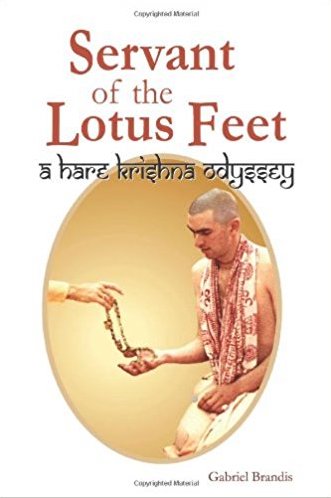
Servant of the Lotus Feet: A Hare Krishna Odyssey
S. Gabriel Brandis, Universe, Inc. (New York, 2004)
Review published in Cultic Studies Review, Vol. 4, No. 2, 2005
In a memoir that reads like a novel, Gabriel Brandis recounts his experience in the Hare Krishna Movement, aka International Society for Krishna Consciousness (ISKCON), from 1980 to 1984. The story begins at the end of his freshman year at Bucks County Community College in Pennsylvania. He travels to Boston College, hoping to transfer there for his last two years. Instead of college counselors and grant administrators, he meets Hare Krishna devotees, joins their temple on Commonwealth Avenue, and drops out of college.
Gabriel takes some hard knocks in school that contribute to his decision to drop out. For example, his bicycle disappears after his roommate cleans out the garage, and then he is fired from his job at the library. He comments, "I soon realized that contempt for materialism caused me to lose my job" (p. 11). Gabriel intended to work through these setbacks and finish college. However, what ISKCON promised was too good to turn down: a life of spiritual bliss, free from the ordinary frustrations of the material world.
Gabriel explains that unresolved issues with his family, especially his parents' divorce, made him vulnerable to joining the temple. He describes visits with his father as inevitable torment (p. 9). He recalls a story from childhood when he tried to set his father up in a fight with another kid's father. When his father wouldn't fight, Gabriel recalls thinking, "He wasn't the tough guy with the leather strap I thought he was" (p. 10). The reader gets the message that Gabriel's ongoing conflict with his father is a major factor in his need to belong to the cult.
He cites the failure of his religious Jewish upbringing to engage him spiritually and his lifelong search for a meaningful spiritual way of life as the third reason he was drawn into full commitment so easily. (I joined ISKCON under a similar set of circumstances for similar reasons. I was coming up to the end of college, still carrying grief and buried anger over my parents' divorce, and was not interested in the prospects of a material career. Like Gabriel, I was searching for a spiritual way of life.)
Although Gabriel Brandis doesn't come out and say it, the book shows that ISKCON's skill at recruiting new members often outweighs the desires of young people to face life's battles on their own. ISKCON appeared to offer him a loving family of spiritual friends, great food, and answers to all spiritual questions and longings. Like so many who joined up, Gabriel had seen ISKCON literature in libraries and had become interested in the philosophy before meeting ISKCON recruiters.
He meets devotees in the park, visits the temple the next day, and stays overnight. Based on this brief encounter, he decides to drop out of college and move in. It all happens very quickly. He comments:
I had always believed that there are no accidents in life. Conversations with the Krishna devotees over those past couple days led me to a transparent door; on one side was the mundane reality of Commonwealth Avenue, and on the other the eternal glory of the spiritual world. Having considered the situation, I decided to embrace the monastic life (p. 22).There may be no accidents in life, but there definitely are traps. I know from personal experience that ISKCON is on the lookout for spiritual seekers who appear lost. Their recruiters are trained to single such people out and help them frame their experiences in terms of a destiny to join up.
In the first few days after moving in, Gabriel learns the ISKCON bathroom routines, how to wear the Indian clothes, and how to put on the forehead markings. He begins to attend the morning program, including all the chanting, and so on, and painfully accepts the restrictions on mixing with the opposite sex. He also begins to accept the ISKCON indoctrination of guilt and fear. At first he has trouble staying awake to chant, but his new bhakta leader (mentor) gets him to believe that, "One's ability to remain awake while chanting is equated with how much love and devotion the worshiper has for the blue god, Krishna" (p. 31).
Within a few days, Gabriel turns over his earthly belongings: a silver college ring, traveler's checks, his train ticket back to school, and even his clothes. He says, "I expected a thank you, but it never came" (p. 33). He also lets them shave his head. In addition, they make him turn over his journal. He accepts it as necessary because, "By keeping a journal now, comparing the present with the life I renounced, my elevation to pure devotional service would be hindered" (p. 35). Gabriel does not actually say so, but the reader gets the impression that giving up the journal is part of ISKCON's program to dehumanize new converts and break all connections to their former lives. The temple authorities let him call his mother to tell her where he is and she is devastated.
Within a week of living in the temple, Gabriel turns nineteen. By that time he has completely morphed into an ISKCON devotee, with all the self-deprecating attitudes of long-time followers. Of his birthday, he writes: "Being the commemoration of the birth of my body it was of no significance. Only the birth of Krishna's pure devotees, so few in number, is celebrated as an 'Appearance Day' " (p. 42).
He fully buys into the guru mystique. He explains:
The mystique was that the pure devotee could "see" his disciple at every moment as though looking into a crystal ball. Fear of offending the spiritual master by thought, word or deed is sufficient to keep the earnest disciple obedient (p. 59).He learns to lie for the organization the first time he goes out to sell books, a practice known as sankirtan. His sankirtan leader tells him to give someone a button and say he's raising money for a children's school. Gabriel asks, "Do we have a school?" He learns that the words don't matter. The object is to get the money, because anyone who gives money to ISKCON will not have to go to hell. Gabriel catches on and becomes a star sankirtan devotee through most of his four years. He comes to see himself as a spiritual soldier "on the battlefield, preaching to the conditioned souls, and rescuing dollars from their lustful grips" (p. 60).
Although he tells himself he is happy with his new life, the text reveals that he is unhappy. For example, at his first ratha-yatra cart festival, he contemplates suicide, because it is said that anyone who dies under the ratha-yatra cart wheels goes back to Godhead.
I eyed those carnival wheels, imagining what it would be like to lie down in the street, my neck in front of where the wheel would pass, surrounded by dozens of chanting and dancing devotees. Freedom from the torments of this fleshy body, and the mind's constant cravings would be mine. I would instantaneously become Krishna conscious for eternity (p. 54).The organization's brainwashing shows in his attitudes toward practically everything that happens. In one passage a woman devotee is injured in a car accident and her face is permanently scarred from shattered glass. He easily adopts the ISKCON party line:
The underlying belief was that Rasa-Lila Devi, known for being a sincere devotee, was too "attached" to her own beauty, so Krishna affected it for her spiritual well-being (p. 55).Gabriel's portrayal is chilling, but accurate. ISKCON trained its devotees to frame everything in terms of guilt for breaking the rules. If someone is too attached to their own beauty, Krishna will "smash" them. If a baby dies, it's Krishna's arrangement to break the parents' material attachments, and so on. In ISKCON there is always a reason for everything that happens, usually something that frightens people into clinging ever more tightly to ISKCON's shelter.
One of the most significant themes of the book is Gabriel's relationship to his guru, Bhavananda. Although Gabriel wants to admire Bhavananda and put him on a pedestal, Bhavananda is thoroughly undeserving of worship. It is obvious to the reader that Bhavananda is a fake. (This is not reported in Servant of the Lotus Feet, but in 1985, Bhavananda, supposedly a sannyasi (celibate priest) confessed to forbidden active homosexuality. The ISKCON Governing Body Commission (GBC) then ordered him to give up the company of his traveling companion and stop giving initiations. When he ignored those orders, the GBC defrocked and expelled him in 1987. Bhavananda later returned to ISKCON in the 1990s.)
Reading Gabriel's account of his guru-disciple relationship with this charlatan is hilariously horrifying. On one hand, the disciple feels guilty over every minor infraction, such as looking at a woman with "lust." Meanwhile, the guru is carrying on an active sexual life and enjoying plenty of material comforts, such as flying around the world first-class, decorating his fingers with jeweled gold rings, and driving around in a chauffeured white limousine.
Several of Gabriel's references to Bhavananda make the reader wonder whether he is purposely hinting at the guru's peccadilloes. For example, this is how he describes one of the other initiates: "Pradyumna, born and raised in England, was flagrantly gay. (p. 92). In the next breath he explains: "I couldn't help but be jealous of Pradyumna. That frivolous fellow always got the "special mercy" of Vishnupada's [Bhavananda's] private association in his chamber" (p. 92)
Later, he follows with: "Pradyumna always made a game of it, generating an air of mystery about his encounter[s] behind Srila Vishnupada's closed door" (p. 94).
Some things in ISKCON were just secret. In my research after leaving the organization, I discovered underground cultures of both homosexual and heterosexual activity among the sannyasis and their associates. There was also a culture of drug use that was kept secret from the rank and file. Gabriel is not aware of this side of ISKCON until later, when he is deprogrammed. Even then, the deprogrammers only touch on the underlying deceit that is now more out in the open, decades later.
As a devotee, Gabriel only knew what the leaders told him and was not aware of details of the larger troubles plaguing ISKCON and its leaders. His knowledge of the problems is extremely limited and naüve. For example, there was a huge problem in New Vrindaban during those years, which included child abuse, drug smuggling, prostitution, and murder. As a consequence, the guru from that zone later spent twelve years in jail (1992-2004). One aspect of the history was that the guru used to send his followers all over the country to do sankirtan in other gurus' zones. When Gabriel encountered New Vrindaban devotees in his territory at a Grateful Dead concert in Hartford, Connecticut, he explains, "Although they were to be respected as Krishna's devotees they were regarded as renegades by much of the Hare Krishna movement" (p. 65). That's all he says about it, because that's all the ordinary devotees knew.
The organization was writhing with guru problems, but Gabriel only repeats the party line: "The International Society for Krishna Consciousness had been undergoing major internal political changes since the 'disappearance,' " (i.e. death, for the reader unfamiliar with the jargon) of Srila Prabhupada in 1977 (p. 67). Later he offers up this rumor with innocent curiosity: "There was even talk that some of the spiritual masters, Krishna's purest devotees on earth, were living secret lives of passion and deceit" (p. 125). Later he adds, "Other spiritual masters were facing criminal charges for serious shenanigans. One by one, the candles of pure devotional service to Krishna were burning out" (p. 190).
In several instances, he mentions a rumor that Ramesvara, the guru for the West Coast, was involved with prostitutes. This is the first time I heard that rumor, even though Ramesvara was my guru when I was involved. Though it later came out that Ramesvara had other problems, I never heard that he went to prostitutes. But who knows? There used to be a saying among fringe members that every rumor in ISKCON grows from a grain of truth.
At the end of the book, the deprogrammers show Gabriel newspaper articles about ISKCON's crimes. He listens to tapes and watches videos of former devotees disclosing what they know about ISKCON's failings. The deprogrammers introduce Gabriel to former members who tell him what the organization is really like. Finding out the truth about ISKCON helps Gabriel reject his affiliation and give up the indoctrination he had accepted.
Gabriel's crucial turning point comes way before the deprogramming, however. It happens at the end of Part I, when his guru is giving a class. Gabriel challenges Bhavananda with this question:
Guru-ji, the Hare Krishna philosophy teaches that we are all individuals, and that we each have a unique relationship with Krishna. Yet every day the devotees do the same activities, dress the same, and eat the same. I don't see where I am becoming an individual? (p. 125)Gabriel recalls: "The blue-eyed guru turned red. 'You Hasidic, Mayavadi apparadhe . . . Have you no gratitude for what has been done for you?' " (p. 125) Gabriel says, "I didn't know whether to throw myself off the rooftop, or fall at the feet of His Grace begging forgiveness" (p. 125). He also recounts the condemnation of his peers for challenging the guru. This encounter changes Gabriel from a submissive follower to a follower with doubts. He begins to realize that he is an asset to the organization only as long as he brings in money and doesn't ask any tough questions.
He also begins to realize that he is criticizing himself for things that are the fault of the organization. The most blatant example is that the organization expected devotees to solicit donations without permits. Over the course of the book he is taken to jail, detained, and ushered off of private property by security guards as a matter of routine. In each incident he tries to cling to the ISKCON party line, blaming himself for the predicament because of his lack of faith, or because of his minor spiritual infractions, such as his lust or his attachments to the material world.
The reader wants to shake the poor fellow to get him to see what's really going on. He is being used to raise money and made to feel guilty for everything that goes wrong. His telling of these dilemmas seems true to life. Outsiders who want to understand how brainwashing works will learn well from reading Gabriel's descriptions. Brainwashing goes deep. Even after undergoing a full deprogramming, he writes in the last chapter, "I understood that the Hare Krishnas are a destructive cult, but it would be years before I could verbalize it without fearing the wrath of God" (p. 218).
The book is a page turner and true to the experience. As an author, Gabriel put himself back into the situation to explain what it was like at each stage. In Part I he is a willing participant, but Part II portrays his disillusionment, leading to his separation from ISKCON. Part II is a study in rebellion against the brainwashers' rules. He says it himself:
How is it possible to have respect and devotion for a cause when that sentiment no longer exists? That's what happened in the temple room that night when I inadvertently revealed the little Oz man, my "spiritual master," behind the grand façade. Ever since then, I simply went through the motions of being Krishna's devotee" (p. 179).His feelings toward his guru change from awe and reverence to wishing he could "kick this little man squarely in the ass" (p. 181).
As an expression of his discontent, he starts to skim money off his collections. He saves up about $800 to buy a ticket to Hawaii, where he imagines temple life will be easier. However, he turns the money over to his guru and confesses instead. He asks to trade in his job collecting money for a job in the kitchen, which makes him happy for a time. Still, he finds his enthusiasm slipping. He stops waking up early and takes hot showers instead of the required cold showers. Breaking ISKCON's rules of austerity, he starts to enjoy things like sunsets, fireworks displays, and looking at women. He even ducks into a peep show cinema one afternoon.
Another theme of the book is his relationship with his parents, which he portrays with touching and realistic emotion. Like Gabriel, and me, many full time ISKCON members stayed in contact with their parents. Often, it's the only connection that ISKCON cannot completely stamp out, and often it is an individual's lifeline to eventually leave the organization. It was true for me as it was for Gabriel. His parents eventually lure him out and have him deprogrammed. Meanwhile, a tension builds throughout the book with the reader asking when Gabriel is going to come to his senses and stop hurting his parents by remaining in the group. Even by the end of the story, he has not completely resolved the conflict with his father.
One of the last scenes is a Passover Seder with his father and his father's side of the family. Gabriel still thinks he's a member of ISKCON and therefore refuses to eat most of the ritual meal, even the matzah, because "the karma of the non-devotee was baked into it" (p. 198). Despite his fanaticism, his father and other relatives remain tolerant. Perhaps it's because they know that the deprogramming will take place the following day.
The father makes a small joke about Gabriel's ISKCON clothing and Gabriel comments, "He had a way of ridiculing whatever I held sacred" (p. 198). The tension is never resolved, but the reader hopes that Gabriel will someday come to terms with his own part in the conflict and use the lessons he learned in his odyssey to make peace with his father.
Another interesting note at the end of the book is his portrayal of the competition between ex-ISKCON members to see who is more detached from the organization. Some ex-members leave the confines of temple life, but remain infatuated with the Hindu philosophy, the practices of ISKCON, and the guru Srila Prabhupada. Others renounce everything about the experience and convert to another religion, or go into the field of counseling cult members who might leave. Most find a comfortable place somewhere in between.
In the epilogue, Gabriel describes meeting a woman he remembered from his days in the organization. Both had been deprogrammed and they exchange stories about their experiences. She says, "It was a shock, but I was happy to get out." He says, "I think if Hare Krishna was a mainstream religion, and not a rigid cult, it would be okay." She says, "Personally, I want nothing to do with it." He says she looked at him "as though I should be back in deprogramming" (p. 216).
The exchange hints at the fact that deprogramming does not solve all of life's problems. There will still be plenty to learn and plenty of cult programming to undo as the years go on. Brainwashing and cult membership leave a scar that the ex-member must learn to accommodate and live with forever. This book offers a dramatic case study that shows exactly how and why this is so.
This book will be valuable to people who study cult programming. It will also find an audience among people who enjoy novels about cults. It should stand up well along side well known novels about cults, such as Mind Game, by Norman Spinrad (1985), Kalki, by Gore Vidal (1998), and The Program: A Novel, by Gregg Hurwitz (2004). Those books are powerful, but mere fiction. Servant of the Lotus Feet is true.
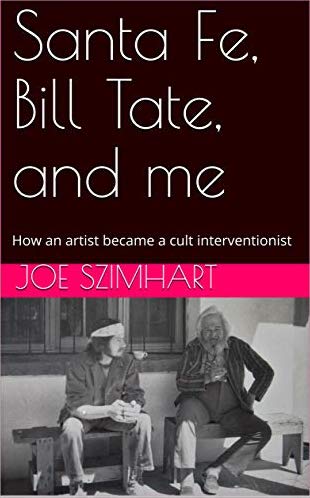
Santa Fe, Bill Tate, and me: How an artist became a cult interventionist
By Joe Szimhart
Reviewed by Nori Muster
Joe Szimhart's story begins in Santa Fe, where he became a working artist after completing his education at the Pennsylvania Academy of Fine Arts. One of the first people he met was Santa Fe icon Bill Tate. Joe said, "Tate's Santa Fe gallery felt genuine, a place where a collector might find something special" (p. 37). The first time Joe visited the gallery, Bill invited him to stay for coffee, and that was the beginning of a 12-year friendship. Joe saw Bill as a mentor and visited his gallery frequently. Joe's art career blossomed as he became a fixture, doing portraits on the Plaza, selling the occasional canvas in Tate's gallery, and receiving several major commissions.
The book shows Joe's frightening romp through the world of theosophy-related cults. His journey began when he read the theosophy books he found at Bill's gallery. He got into the local Santa Fe "I AM" group, which is an offshoot of theosophy. He asked Bill about "I AM," but Bill just scoffed. He knew he had theosophy books around, but he didn't realize Joe had already become deeply immersed.
The only thing Bill could recall about "I AM" was the time the group protested in front of the Santa Fe New Mexican offices in the 1950s. The members were angry over an article about their leaders' legal problems. One of the protesters decreed for the editors and publisher, "The flaming sword of St. Germain will be stuck in your guts" (p. 73).
Theosophy followers believe in the power of mind, and they believe they harness metaphysical power when they decree. Decrees are chants, invocations. For example, they may decree, "I am I am I am rich and powerful today." They decree in groups, speaking loudly at a rapid pace. "I AM" and other related groups have decrees for everything from manifesting money to assassinating disliked politicians. They believe in ascended masters they call The Great White Brotherhood (emphasis on white).
Not all "I AM" followers were white supremacists; but, Joe explains, the philosophy is based on the belief that only a limited number of people can get into heaven, with the clear implication that privileged white people are at the front of the line. Joe later learned that theosophy and Nazism were intertwined, as described in the study, The Occult Roots of Nazism: Secret Aryan Cults and Their Influence on Nazi Ideology, by Nicholas Goodrick-Clarke (1992, Chapter 2, "The Modern German Occult Revival 1880-1910, pp. 17-32). Joe was taken with the "I AM" organization and had no idea of its elitist philosophy; but he worried about the magical powers of decreeing. He hoped he would not abuse the powers, saying, "My inclination at the time was to believe that my God within would direct me to do right" (p. 64).
Ultimately Joe ran up against the "I AM" exclusionary rules when the members told him he had a hole in his aura and could not participate fully in "I AM" in this lifetime. Joe said, "I was stunned. Was this true? Did I have an actual hole in my aura?" (p. 72). He took the hint and drifted away from the group; but he continued to hone the same philosophy through Agni Yoga.
Agni Yoga taught Joe that a person's thoughts were a powerful force that could bring good or bad karma. Psychic energy could accumulate in objects, people, creatures, or nature. After visiting the Agni Yoga Society in New York, he was driving home to New Mexico when his truck broke down. He blamed it on his doubting thoughts, which were accumulating as he drove. Joe acknowledges now that his truck had more than a hundred thousand miles on it; and in retrospect he sees through the rhetoric of magical occult powers, which is a way to make victims feel guilty and blame every bad thing on themselves.
From Agni Yoga, Joe stumbled into another theosophy group, the Church Universal and Triumphant (CUT), also known as the Summit Lighthouse. He later realized that, "Despite its grandiose claim to represent the essence of all religions, CUT had a paranoid, right-wing reputation after it amassed weapons for self-defense against marauding, Godless Liberals" (p. 184). Realizing the absurdity of it and feeling broken by it, Joe became disillusioned with CUT after about a year. He turned to Sister Theresa, a nun and friend of his, for advice. She listened to his story and offered to pray with him. This was his turning point. Within a few months, Joe bought a round-the-world plane ticket, a promotion available in the early 1980s, and went out to see the world.
His travels included Hawaii, Australia, Japan, Europe, Mexico, India, and Nepal. He wanted to visit places associated with theosophy, and he went to India because the infinitely complex world of theosophy intertwined with the beliefs of numerous Indian gurus. The most extreme example of this blending was when theosophy leaders Annie Besant and Charles Webster Leadbeater adopted J. Krishnamurti as a child and tried to raise him to become a world messiah. Joe also journeyed to Nepal to see the Himalayas, where his favorite theosophy-related artist, Nicholas Roerich (1874-1947), had painted his colorful and mysterious landscapes.
Joe also revisited his birthplace in Pocking, Germany, where he had spent the first 2 years of life in a displaced persons' camp with his parents after World War II. The camp was gone; but with the help of people he met there, he found the church where he was baptized. This experience helped him make the connection between how the hardships the Nazis imposed on his family mirrored the dynamic of the cultic groups he followed as an adult.
After returning to Santa Fe, Joe struggled to acknowledge that theosophy was a made-up philosophy. He felt drawn to cult critics and eventually realized he was turning into a skeptic. Giving up his religion, he struggled with his identity, trying to reconcile his life as an artist and his new calling as a cult interventionist. In the last chapters of the memoir, he describes his collaboration with other cult interventionists and recounts his most memorable encounters with active cult members.
Besides being a valuable map to the theosophy universe, Santa Fe, Bill Tate, and me is an artist's memoir. Joe explains how he sought the spiritual path to add soul to his art, but that it also led him to help others who had fallen into cultic traps. Besides being his own story, the book serves as a tribute to Bill Tate, Joe's true friend and guide. Joe's narrative reveals Bill as a gentle, humble man who led a long life of adventure and hardship. The stories about Bill's life are mesmerizing, offering humor and happy moments to go with the drama of Joe's spiritual quest.
Note
[1] The decree is cited in Turn Left at the Sleeping Dog: Scripting the Santa Fe Legend, 1920-1955, by John Pen La Farge (2006), p. 205.
Buy at Amazon paperback & Kindle
This review appeared in ICSA Today, Vol. 11, No. 2 (2020)
About the Reviewer:
Nori Muster, MS, is the author of Betrayal of the Spirit: My Life behind the Headlines of the Hare Krishna Movement (University of Illinois Press, 1997), Cult Survivors Handbook: Seven Paths to an Authentic Life (2010), and Child of the Cult (2012). She was an ISKCON member from 1978 to 1988, then earned her Master of Science degree at Western Oregon University in 1991 doing artwork with juveniles. She is currently a freelance writer and adjunct professor based in Arizona. Her website for cultic studies information is culticstudies.html.
Book Review
Sex Cult Nun
Breaking Away from the Children of God, a Wild, Radical Religious Cult by Faith Jones Reviewed by Nori Muster Published in ICSA Today, Vol. 13 No. 2, 2022, pp. 27-28
Faith Jones grew up in the Mission Field[1] of the Children of God. The Home Countries were the UK and USA; Mission Field refers to outposts the group established to spread the word.
Jones spent her childhood in an austere neighborhood of Macau, China. Her parents purchased a run-down property and developed it into a flourishing enterprise with farm animals and gardens. After raising a gosling and making it her best friend, she found it on the dinner table one night. Her non-apologetic father laid down the law, and she learned she could never become attached to any of the animals on the farm.
Sex Cult Nun is a story beautifully told, and is hard to put down. Jones writes in visceral metaphors. Her narrative about Macau begins with the outhouse on the property, which smelled of years of human waste, was covered with spider webs, and had snakes in its rafters. This image is a perfect metaphor for the greater part of her experience.
The Children of God founder, Moses David Berg (1919-1994), was Jones's grandfather, and was at the core of the World Services (WS), the secretive leadership of Children of God. Jones never met her grandfather or his wife and co-leader, her grandmother, Karen Zerby (aka Maria Berg). Growing up, she never even saw photos of them. When she finally saw a photo of her grandmother, she felt disappointed and described Zerby as plain looking. She had always imagined Moses and Zerby would look like deities.
The Children of God group left a legacy of pain and suffering. In 1995, a British judge ruled that the group, including the leadership, had engaged in sexual abuse of minors.[2] RAINN (Rape, Abuse & Incest National Network), the founders of the National Sexual Assault Hotline, describe the long term effects of sexual abuse. It can result in depression, Post Traumatic Stress Disorder (PTSD), disassociation, panic attacks, sleep disorders, and multiple other issues.[3]
Jones's cohorts, the first generation of abused children, are now in their forties and fifties. The children of the Children of God still live with the scars of abuse, including Faith Jones. However, she possessed an indomitable spirit that propelled her through the hostile environment of physical and sexual abuse. Several things worked in her favor. First, she was not separated from her family at an early age. Many cults remove children from their families to live in a communal situation. This did not happen to Jones. She grew up with her mother, father, siblings, and other extended family. As a child she was allowed to play with other children, and describes the victories she remembers growing up. She learned to jump off the dam wall into the water like her brothers, and she was proud of her family's part in advocating for a sewer system and garbage removal services in their district of Macau. She also recalls fond memories of the times she and her family would go out to sing and spread god's word. She said she felt like a celebrity within the group because of her connection to the group's leadership.
One of her good memories was the time her mother attempted to leave the organization and they went to the USA. For a few months Jones lived with her maternal grandmother and attended public high school. The classroom experience ignited her genuine thirst for education.
Children of God required children to "share," a euphemism for sex, and in some locations, children had to set out a "sharing schedule," when they would be available for sex with adults. This was not the case in the outpost where Jones lived, but she was wary as she was coming of age. When she was a pre-teen, she found out the organization had circulated "Liberty or Stumbling Block," a statement to discourage sex with minor aged children.[4] It made her feel protected, but soon after she read Liberty or Stumbling Block, a man forcefully kissed her against her will. She felt violated, wondering "Does French kissing count?"
Although Jones remembers police raids and accusations of sexual abuse against the group, and although she experienced it firsthand, she didn't make the connection at the time that what was happening to her was abuse. The theme of compliance with sexual molestation pervades the book, culminating in her brutal rape at a Children of God house in London, followed by a second brutal rape that made her decide to leave for good.
The couple of times she found a man she liked, it turned out badly for her. In one instance she accepted a timid but welcome kiss from a man who was a Systemite, a non-member. Due to her allegiance to the rules against mixing with outsiders, she turned herself in and accepted the punishment - isolation in a "Victor house."[5] In another instance she found a man she loved and wanted to marry, but World Services moved him to a different location. The leadership could move people around like chess pieces, and she accepted it as a fact of life. (Jones herself lived in Macau, Hong Kong, Thailand, the USA, back to Macau and other locations in China, Russia, Kazakhstan, back to China, Taiwan, and back to Macau, before settling in the USA after she left the group.)
In an interview with the New York Post, she explained where she got the title of her book. She said after leaving the group she went to Sri Lanka for a Buddhist meditation retreat and felt at home with the Buddhist monks and nuns. She told the reporter, "And then it hit me. I grew up like this! I grew up like a little nun, except there was a lot of sex involved!"[6]
The subtitle of the book is "Breaking Away from the Children of God," so it's not wrong to give away the ending. However, throughout the book, the reader wants her to leave, but she remains dedicated well into her twenties. Several times it seems like she has left for good, but like a homing pigeon she returns to the group.
When she finally leaves, she soars ahead in her education, psychological recovery, and career as an attorney. The reader might doubt Jones's claim that she has recovered, especially considering the abuse she endured. Rape does not just go away. Beatings as a child do not just go away. They leave permanent scars. However, it's clear Jones has reached a level of acceptance, putting her past to rest. After all, she had the courage to relive her experiences in this memoir, and the strength to stand behind what she wrote in this memoir.
Professor Stephen Joseph, quoted in a Psychology Today post, confirms trauma can become a source of strength. He said if trauma victims can come to terms with what happened, not suppress or deny it, they will have new energy to focus on what's important in life. He also said trauma survivors often realize they are stronger than they thought, and develop self-confidence and a sense of gratitude. He offers this metaphor for healing:
"You're rushing around your house and you accidentally knock a precious vase to the floor. It smashes into pieces immediately. What do you do next? Do you see the vase as garbage now and throw it in the bin? Do you collect the pieces and try to put them together exactly as it was? Or do you pick up your favourite pieces from the pile and use them to create something new, like a colourful mosaic?"[7]I believe Faith Jones picked up the pieces and used them to create something new in writing her book. Her story is inspiring and offers hope for others who grew up in abusive cults.
Notes
1. Mission Field refers to outposts the group established to spread the word.
2. The Rt. Hon. Lord Justice Alan Ward's judgment of child abuse in the Children of God is noted at Wikipedia, see Wikipedia Former members elaborated on the judgment in a statement, Another Cosmetic Apology?, written and compiled by WC, and published on their website, see exfamily.org
3. RAINN (Rape, Abuse & Incest National Network) Effects of Sexual Violence, see rainn.org
4. "Liberty or Stumbling Block," by Sara Davidito, November 1986, a memo to all Children of God leaders to discourage sex with minors, see: xfamily.org
5. Refers to a program used by The Family (formerly known as The Children of God) during the late 1980s an earky 1990s to provide spiritual training to second-generation members. See xfamily.org for more information.
5. New York Post, December 4, 2021. 'I grew up like a nun - but with a lot more sex,' by Raquel Laneri nypost.com
5. Psychology Today blog, How Trauma Can Lead to Positive Change, The science of post-traumatic growth demystified, by Susanna Newsonen, June 13, 2016. psychologytoday.com
Gold, Guns and God: Swami Bhaktipada and the West Virginia Hare Krishnas: Vol. 4: Deviations in the Dhama by Henry Doktorski
At Amazon: Gold, Guns - Volume 4
Reviewed November 18, 2021
Henry Doktorski is writing the "Gold, Guns and God" series to document the history of New Vrindaban, the Krishna compound in West Virginia. Volume 4, Deviations in the Dhama, focuses on the abuse of women and children. Doktorski is a meticulous researcher, and bases his books on interviews and thorough documentation.
A couple years ago he invited me to edit this volume and I agreed because I respect his work. We spent six weeks on it over the summer of 2021 and I believe the book turned out well.
Even though the book is good, I would give it only one star because the cover ruins it for me. The picture on the cover shows children huddled around the guru of New Vrindaban. In the book, Doktorski documents the guru as a pedophile. In the photo, one boy has his mouth on the guru's leg, close to the guru's crotch. Although this provides confirmation of the abuses Doktorski describes in the book, I believe it does not belong on the cover.
Over the course of working on the book with Doktorski, I repeatedly encouraged him to use a different photo. I told him this one sensationalizes the child abuse and brings back painful memories. Putting it on the cover is a slap in the face to the guru's victims, their families, and people who care about what happened.
Further, I warned Doktorski it could be construed as child pornography. I told him if his book was sitting on the shelf in a bookstore, pedophiles would pick it up because of the image on the cover. I also warned him child pornography is a serious crime and the cover could put him in legal jeopardy.
Last summer he sent me a pre-publication edition to edit with that photo on the cover. Before I sent the book for secure shred a few weeks ago, I tore the cover off and used a pair of scissors to free the children from the pedophile guru. Then I tore up the scraps and threw them away.
The abuses that took place in New Vrindaban and other temples and boarding schools of the International Society for Krishna Consciousness (ISKCON) still haunt me. I continue to pray for healing for the families.
I believe this book would be helpful in the recovery process, but unfortunately, the cover makes it a hurtful book.
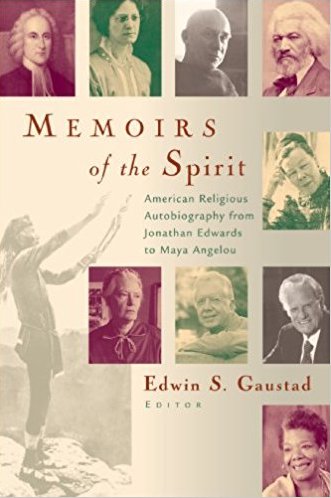
Memoirs of the Spirit: American Religious Autobiography from Jonathan Edwards to Maya Angelou
by Mr. Edwin S. Gaustad
A Blueprint for the Peace Paradigm, November 13, 2010
I read this book soon after it came out, and just after 9/11. It was part of my research for my book on how to meet the challenges of 9/11 and establish a future of peace. This book was excellent. It is an anthology of autobiographical statements drawn from speeches and writings by Nobel and Pulitzer winning figures and other significant peacemakers.
This book holds the secrets to a positive future. I have been looking for this book for a couple years because I had forgotten the title. In doing similar research today, the book comes up again. Finding the book again is like the return of an old friend. Read Memoirs of the Spirit if you want to restore your faith in humanity and purpose in life.
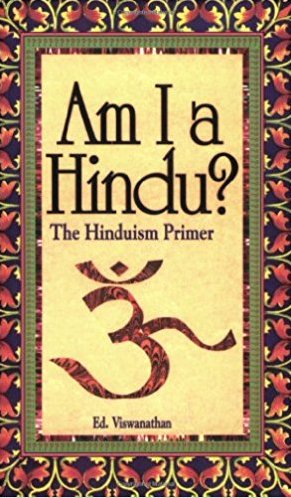
Am I A Hindu? The Hinduism Primer
by Ed Viswanathan
Transmits the fine points of a grand old religion, November 7, 2001
7 of 7 people found the following review helpful:
Am I a Hindu? is the essential everything you need to know about Hinduism book that gives seekers the basics of this complex and ancient religion. It's an excellent book for outsiders looking in, but even more valuable for Hindus living in America (and other Western countries) who need to transmit the religion to their children. Growing up far away from India, many Hindu youths are unaware of the lovely traditions of their rich heritage. Ed Viswanathan dedicates a chapter to each fine point, making it an easy and enjoyable read. The book will also help Americans who are intrigued with Hinduism and tempted to join a Hindu-based group, such as the Hare Krishnas, the Rajneeshies, or any other number of Americanized versions of the faith. So often, these groups twist the philosophy to make it seem like you have to join up and move in. Not so: the religion is best practiced in one's own home and this book tells you how. Also, the Westernized Hindu groups often misinterpret the role of guru, so that the guru becomes more of a baby sitter than a source of wisdom and knowledge. I highly recommend this book for anyone who wants to learn what the Hindu religion is really all about.

Steamboats in the Timber
by Rubl El Hult
Ancestry Research for Steamboat People, February 10, 2003
3 of 3 people found the following review helpful:
If you want to look into the history of steamboats in Idaho, this is a good place to start. The author shares her knowledge of the paddlewheel steamboat era in her state. Includes numerous photos.
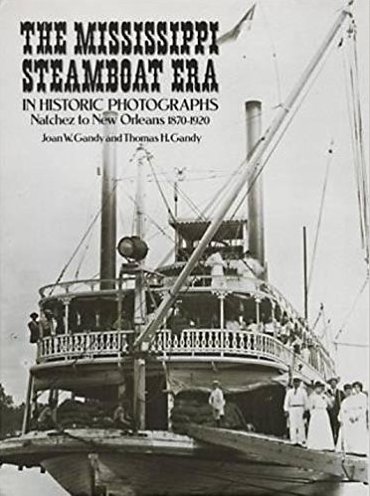
The Mississippi Steamboat Era in Historic Photographs: Natchez to New Orleans, 1870-1920
by Joan W. Gandy
Historic Photos and more, July 10, 2000
4 of 4 people found the following review helpful:
This coffee-table-size paperback offers about 100 historic black and white photos of the steamboat era: the boats, the people and the towns. A steamboat lover's dream at a good price.

Lloyd's Steamboat Directory and Disasters on the Western Waters
by James T. Lloyd
Best Part of American History, July 10, 2000
6 of 6 people found the following review helpful:
The best part of American history, as far as I'm concerned, is the history of paddlewheel steamboats. We knew that many of them sunk, but this book tells you HOW they sunk, and where. If you're a steamboat lover, this book will fill in the gaps for you. It has about 100 illustrations of steamboat disasters and maps, an index of boats, and an informative introduction to the new edition. Highly recommended supplement to the steamboat bible: Fred Way's Packet Directory.
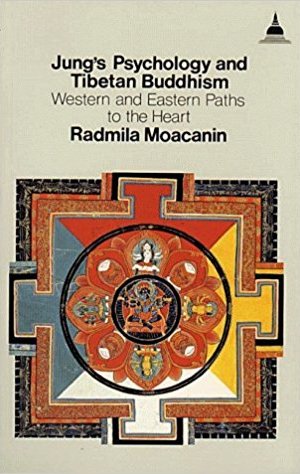
Jung's Psychology and Tibetan Buddhism: Western and Eastern Paths to the Heart (Wisdom East-West Book)
by Radmila Moacanin
East Meets West, July 9, 2000
7 of 9 people found the following review helpful:
Every student of Carl Jung should read this book. Dr. Moacanin fills us in on the similarities between the Tibetan Buddhist tradition and the Western scholarly tradition (of which there are many we never consciously thought about before). Further, she communicates with clarity and sensitivity. Although looking for scholarly information, the Western mind finds an enriching and expanding experience in this book.
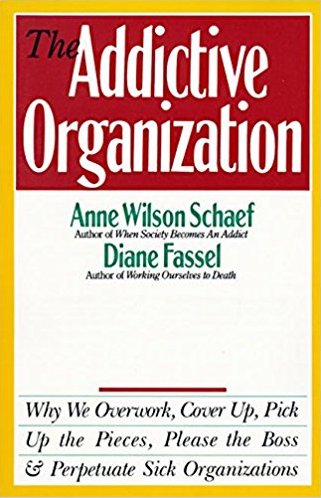
The Addictive Organization: Why We Overwork, Cover Up, Pick Up the Pieces, Please the Boss, and Perpetuate Sick Organizations
by Anne Wilson Schaef
One of the most useful books I've ever read, April 20, 2000
9 of 12 people found the following review helpful
I found this book while in graduate school and wrote a long essay about my experiences in an addictive organization,* based on my understanding of the theories presented in the book.
I highly recommend this book to anyone who feels trapped in an organization and wants to understand more about how they work.
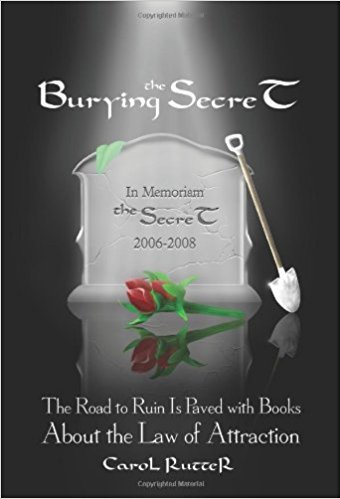
Burying the Secret: The Road to Ruin Is Paved with Books about the Law of Attraction
by Carol Rutter
positive thinking - there's more to it than you think, January 31, 2008
25 of 32 people found the following review helpful
By Nori Muster "Nori Muster" (Mesa, AZ United States)
The premise of Carol Rutter's book is that affirmations alone cannot turn your life around. She tried it and failed miserably, ending up poverty stricken, working in a call center as a telephone solicitor with criminals and crazies. She critiques the premise of The Secret, by Rhonda Byrne, editor. She says that "Editor Rhonda Byrne and The Secret's 24 contributors would have us believe that the law of attraction supersedes all other Universal laws, because no other forces governing our lives are mentioned in this book." Burying the Secret looks into all the causes of our problems, and offers a practical guide to moving through life's difficult straits.
Carol Rutter describes all the factors she has found that may sabotage one's best intentions to "think positive" and "visualize success." She names outside forces, such as a history of child abuse or bad parenting, that are beyond our control and may thwart our conscious intentions. If we are stuck in denial or repression, affirmations won't help. We may simply have things to work out with our subconscious mind before we can program it for success.
Carol Rutter mentions that we all have difficult situations to work out in life and that working things out brings maturity. Simply trying to "think away" a problem through affirmations, or to try to get rich by using the law of attraction, would defeat our purpose, which is to learn from our mistakes. Also, sometimes we must sacrifice for a loved one, and therefore postpone the fulfillment of our own visualizations. She rightly points out that adversity brings us closer to god, so some problems bring their rewards only after we have worked through them using all our resources, not just positive thinking. She points out that trying to solve a complex problem with affirmations is simply "magical thinking," which is a common sympotom of psychosis and schizophrenia.
This book is sorely needed and will answer many questions for some of the millions who purchased The Secret book or DVD, who have been befuddled in their attempts to affirm their way to success, or accumulate riches through the power of attraction. Therefore it should sell well among disillusioned former Secret fans. The book is well written and personal, offering examples from the author's own life and sincere quest to find herself amid the pressures we all face in contemporary society.
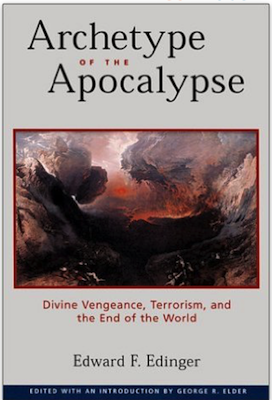
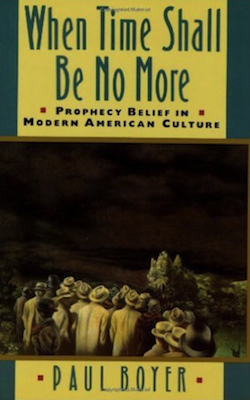
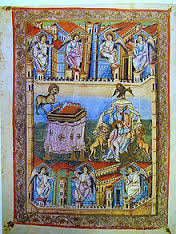
Archetype of the Apocalypse by Edward F. Edinger, and When Time Shall Be No More: Prophecy Belief in Modern American Culture, by Paul Boyer
Reviewed December 10, 2016
Archetype of the Apocalypse is a Jungian interpretation of all the symbols in the Book of Revelation. For example, in the Jungian sense, the whore of Babylon represents degradation of the feminine spirit. He goes through every symbol in the heavily coded story. Revelation is the last book of the Bible, and has stirred many conspiracy theories over the last two thousand years. Many people interpret Revelation to predict the end of the world.
After reading Archetype of the Apocalypse, I turned to the red letter bible my grandparents owned in the twentieth century. I must have read Revelation before, but it only came alive to me reading it back-to-back with Archetype of the Apocalypse. After that, I read When Time Shall Be No More, by Paul Boyer. Boyer's book offers a history of apocalyptic movements around the world, with a focus on how the history affects contemporary America.
Both Edinger and Boyer say Revelation and the apocalypse are symbolic stories of historic importance. However, when people try to take the stories literally, as though the end of the world is literally happening at this time, it creates anxiety and violence in society. It is better to work out the lessons symbolically, through discussion, writing, and other creative expression. These two books offer a firm basis for getting through the apocalypse without having to barricade your doors!
Archetype of the Apocalypse - buy now
When Time Shall Be No More - buy now
Book of Revelation - KJV
Index